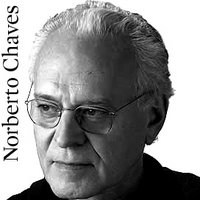
In recent years, the discipline of design has evolved rapidly alongside the demand in our environment. A few years ago is still not considered a serious matter poblemáticas analyzing visual in nature, much less to pay for work that, in light of all he was only plastic inherited ability. However, the design is a mixed practice a profession in which plural variants are brought together technical, methodological, cultural and stylistic (Chávez, N.).
activation capacity of the image in conjunction with the new problems of organizing information and creating a new need to solve these problems distinguish them from traditional artist. It develops and new growth for the global community, a designer with a command of what you need to communicate. But What will you communicate?
The design profession covers various alternative solutions. Normally we have located in the field of graphic or visual representation, however, times have proved that the design process does not start in finding a graphical solution, on the contrary, in many cases result in it. Sometimes not even necessary to make a tangible product, but cognitive. Here is the confusion caused by the object of study of information design.
is much easier to deal with peripheral disciplines of information design. The object of study in these cases is a physical solution or visual credibility a greater percentage of the work. Moreover, the fact solve a problem using temporary structures and processes and intangible assets does not give the user the satisfaction that would have. However, many times the client is too close to the problem to be solved to see clear enough (Shedroff, N.). It is important to keep some distance and objectivity so as not to make false solutions that lead to the predisposition of a graphical solution.
have devised many ways of dealing with information design. There are different methodologies that systematically developed the problem based on a theory for the designer to reach the best solution. Bruce Archer sees design as a discipline in charge of "selecting the right materials and shape them to meet the needs of function and aesthetics within the limitations of the available means of production. At the same time, responds to a series of steps that help that this be conducted by organizations in three stages: analytical, creative and execution. So like this there are many methodologies that have been developed with different objectives and under different circumstances to cover for what users need. In my opinion, good methodology is one that solves practical and functional needs of the project which is trying to solve. Each will have different objectives and problems to which the methodology must adapt.
This is one of the major differences that make the difference between conventional design and information design. Here we speak of a process, a methodological framework that is based on our design. Norberto Chavez mentioned the conflict that exists in practice and design review: "there is a lack of theoretical development." In response we have seen the emergence of new methodologies, we have seen the design of information not only as a discipline focus forming visual but as a designer with an analytical mind and high awareness of working in an interdisciplinary way. For the same reason that its subject is information, it varies depending on the project. It is almost impossible to develop in an area full of designers (of any kind) without falling into what Shedroff mentioned, a considerable gap between the designer and the problem will achieve a more effective solution. Logically, the real work of design where information is yet to come.
Speaking of objects and objectives, include the recipient of our text, as Umberto Eco would call is the that ultimately will be one of the objectives of our work. The work is aimed at him, not the initial aesthetic perception and the experts of the theories of design. The issue here is that the message gets to him with more understanding and less polysemy possible. Each player is different and we can not completely control the context in which each unfolds but we can get a basic idea of \u200b\u200bthe needs and concerns it solves.
"receiver built their own messages based on the acquired," says Stuart Hall. The receiver experiences form the context field to help you interpret the thousands of messages daily and simultaneously you arrive. We are always exposed to a myriad of messages, however, one must be aware that these messages can only Birthday its objective in passing various "tests" that will reach the receiver. Evidence can be both user perception of himself as circumstances beyond its scope. The objectives of the designer continues to increase in parallel with the design process.
Finally, in conclusion, I can mention that the objects that form part of the design of information (understood as part of their structure) are as diverse as the type of project to which they are intended. Moreover, the object of this discipline, perhaps even have several users waiting for something tangible. Our culture is not yet accustomed to the benefits of cognitive design, this alone will solve the time, even large companies are already realizing the not too distant future, far, projects are usability issues for which are more concerned than they would have believed years ago. Thus gradually become more and more requested, however ephemeral that they like.
Chavez, Norberto. Design and Communication: critical theories and approaches. Paidos: Buenos Aires, 1997.
Eco, Umberto. Model Reader. Barcelona: Editorial Lumen, 2000.
Ehses, Hanno. A Semiotic Approach to Communication Design. The Canadian Journal of Research in Semiotics, Vol IV No. 3, 1977.
Gombrich, EH visual image, its place in communication. E. Debate: Madrid, 2000.
Hall, Stuart. Encoding / Decoding. Culture, Media and Language. London: Hutchinson, 1980.
Morales Rodríguez, Luis. For a theory of design. UAM-A / Tilde: Mexico, 1989.
Shedroff, Nathan. Unified field theory of Design. Electronic document recovered http://www.nathan.com/thoughts/unified



























